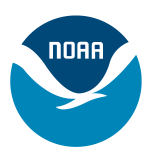- Industry: Government
- Number of terms: 30456
- Number of blossaries: 0
- Company Profile:
NOAA Coral Reef Conservation Program, National Oceanic and Atmospheric Administration, U.S. Department of Commerce
A marine protected area that is completely (or seasonally) free of all extractive or non-extractive human uses that contribute impact (some exceptions may be permitted for scientific activities); also called "marine reserve" or "fully protected area".
Industry:Natural environment
A process for calculating a desired result by means of a repeated cycle of operations. An iterative process should come closer to the desired result as the number of iterations increases. Each repetition of the process is also called an "iteration", and the results of one iteration are used as the starting point for the next iteration .
Industry:Natural environment
A state that is the best fit for the current situation. All minor changes make the situation worse; in biology, it is the level of some environmental factor, within a species' or population's tolerance range, at which the species or population can function most efficiently or with the greatest positive effect to its physiological or reproductive fitness .
Industry:Natural environment
A weight at the bottom of the boat to help keep it stable. Ballast can be placed inside the hull of the boat or externally in a keel. Water picked up as ballast in one location may be released in another, and in doing so, may introduce non-native species.
Industry:Natural environment
An instrument for measuring transmission of light through a fluid.
Industry:Natural environment
In taxonomy, the combination of a generic name, a specific name, and a subspecific name, that together constitute a scientific name subspecies.
Industry:Natural environment
Organisms which swim just above sand and are dependent upon it as a food source.
Industry:Natural environment
Sound waves that have frequencies higher than what humans can hear, usually greater than 20,000 Hz. Some animals such as bats, a species of cave bird, and cetaceans use these high frequency ultrasonic sounds for communication and navigation.
Industry:Natural environment
The earliest part of a bivalve or brachiopod shell; in bivalves, it is the most dorsal section of the shell, while in brachyopods, it is the most posterior.
Industry:Natural environment
